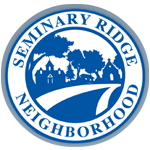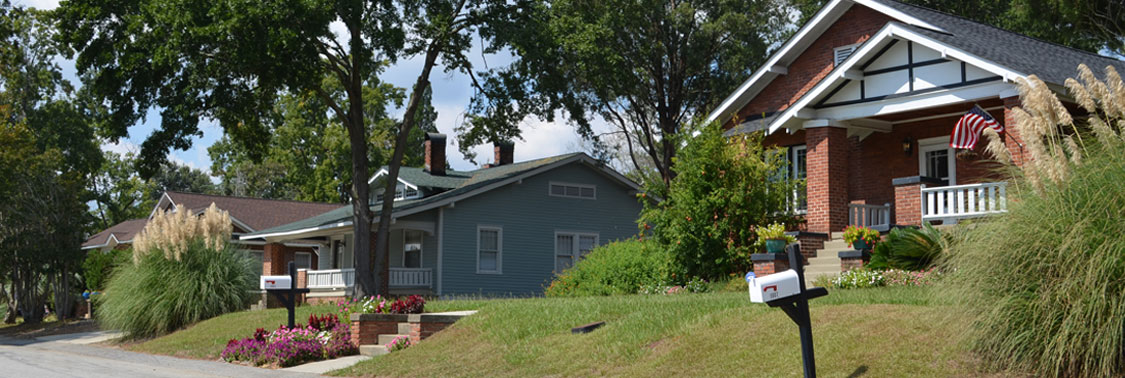Seminary Ridge Protection Area Historic District
Are you ready to invest in a renovation or rehabilitation of your historic property?
Before you get started on that big investment, have you heard about the Bailey Bill?
The Bailey Bill is a tax abatement program for historic properties administered locally through the City of Columbia’s Planning Division. If you live or own property within one of Columbia’s fifteen historic districts your property may qualify for the Bailey Bill tax abatement. Generally, the Bailey Bill encourages sensitive rehabilitation of historic buildings by requiring retention and preservation of historic features and materials; but it also allows for updates to building systems (mechanical, electrical, plumbing) and like your local historic district, the Bailey Bill doesn’t prohibit sensitive additions to historic buildings. So how does it work? If you invest a minimum of 20% of your building’s assessed value back into the building, and the work is eligible and approved, then the assessed value of your property is abated for the next 20 years. This means that even if the value of your building increases over time you will continue to be taxed at the pre-rehabilitation assessed valuation for 20 years for both city and county taxes! Sounds good, right?
Here are a few FAQs to get you started:
What buildings qualify for the Bailey Bill?
The Bailey Bill may be applied to commercial or residential properties that are: a) individually listed in the National Register of Historic Places; b) a contributing property in a National Register district; c) an individual City of Columbia historic landmark; or d) a contributing building in a local historic district.
If you don’t know if your building is considered contributing to a local historic district then contact the City of Columbia’s Planning Division to ask.
What qualifies as an eligible expense?
Eligible expenses include maintenance, repair, or rehabilitation of original materials, such as siding, original windows and doors, characteristic features, etc. and the removal of non-historic materials and features. Other eligible expenses include items that make the building basically habitable and safe: Plumbing, roofing, structural work, heating and cooling systems, wiring, etc.
Items that are NOT considered eligible expenses include new plumbing/lighting fixtures, countertops, tiling, and other aesthetic upgrades that do not involve the preservation of a historic feature. Also, while additions may be allowed for a Bailey Bill property, the construction of the addition will not be considered an eligible expense.
How do I get the process started?
The first step is to talk to a preservation planner (within the Planning Division) to see that your building and the work you intend to do qualifies for the Bailey Bill. City Staff will help you through the process and let you know of any potential issues or concerns. You will then need to fill out a Bailey Bill and D/DRC application. Once the applications and all required application materials are returned to Planning Staff, they will schedule your project for review at the next available D/DRC meeting. Generally preliminary certification will be granted at that D/DRC meeting.
How long do I have to complete the work?
Once you receive preliminary certification for the Bailey Bill you will have 2 years to meet the investment threshold and complete the work. Please also note that the 20 year timeline for the tax abatement starts at preliminary certification– not when work is completed.
What are my responsibilities as the building owner?
1. Owners are responsible for ascertaining the property’s assessed value prior to preliminary certification. The value that the County has on record for the property will be locked in on the date of preliminary certification.
2. The owner will adhere to preservation standards for the rehabilitation and will retain as much original material as possible. If repair is not possible, the owner shall consult with staff about how to proceed before removal of historic materials or features.
3. The owner must not make any changes to the exterior of the building for the next 20 years without prior approval from Staff or the D/DRC. Making unapproved changes to the exterior of your building may result in the retraction of the Bailey Bill.
What if I sell my property before the 20 years is up?
One of the benefits of the Bailey Bill is that it goes along with the sale of the property if the sale falls within the 20 year abatement period. As the seller, you are responsible by state law for disclosing your zoning (which includes the historic designation of your building) to a potential buyer; the fact that your property has tax abatement via the historic designation is a great selling tool!
A couple more things to keep in mind…
Keep your paid invoices! Once work is complete you will need to submit paid invoices to Planning Staff as proof that the investment threshold has been met.
The Bailey Bill is not retroactive. Any work completed before preliminary certification will not count toward your investment threshold; So wait until preliminary certification is in place before getting to work.
And just for fun, here is a brief history of the Bailey Bill:
- Named in honor of former SC State House of Representative J.J. “Jimmy” Bailey of Charleston who sponsored the bill.
- Signed into law by Governor Carroll A. Campbell, Jr. on May 19, 1992.
- Initially, the Bailey Bill specified a maximum abatement period of 10 years; the legislation was changed in 2004 to allow the maximum abatement period to be increased to 20 years and at the same time decreased the minimum expenditure requirements.
- The City of Columbia amended its ordinance in 2007 when City Council set the investment threshold to 20% of the fair market value of the building and changed the length of the abatement period to 20 years. These numbers represent the minimum investment and the longest abatement period allowed by the state enabling legislation.
- Since its start, over 140 properties in the City of Columbia have taken advantage of the Bailey Bill abatement program.
For more information about the Bailey Bill and other historic property incentives please visit the City’s website.
Be sure to contact the Planning Division with any questions.


